According to Renishaw’s Chris Dimery, two key barriers are limiting the adoption of additive manufacturing: high cost per part and expensive capital investments. At Formnext 2024 Dimery, Additive Manufacturing Business Manager for the EMEA region, explained how the company’s new 3D printers address these critical challenges.
During the Frankfurt-based trade show, the British engineering firm unveiled its RenAM 500D series, adding the 500D, 500D Flex and 500D Ultra to the RenAM portfolio of laser powder bed fusion (LPBF) systems. These new industrial metal 3D printers incorporate two 500 W lasers into a 250 mm x 250 mm x 350 mm build volume.
In a discussion with 3D Printing Industry, Dimery outlined how Renishaw’s new offerings balance productivity and upfront investment, addressing growing market demand for versatile and cost-effective metal 3D printers. He emphasized the value of Renishaw’s “game-changing” TEMPUS technology, which is available on the 500D Ultra model. Dimery explained how TEMPUS reduces cycle times by up to 70% by firing both lasers while the powder recoater is moving.
Renishaw’s Formnext booth featured several real customer applications, including 3D printing use cases for the medical, automotive and energy sectors. It also showcased Team GB’s track bike used in the 2024 Olympic Games, which features parts 3D printed on the company’s RenAM 500Q four-laser metal 3D printer.
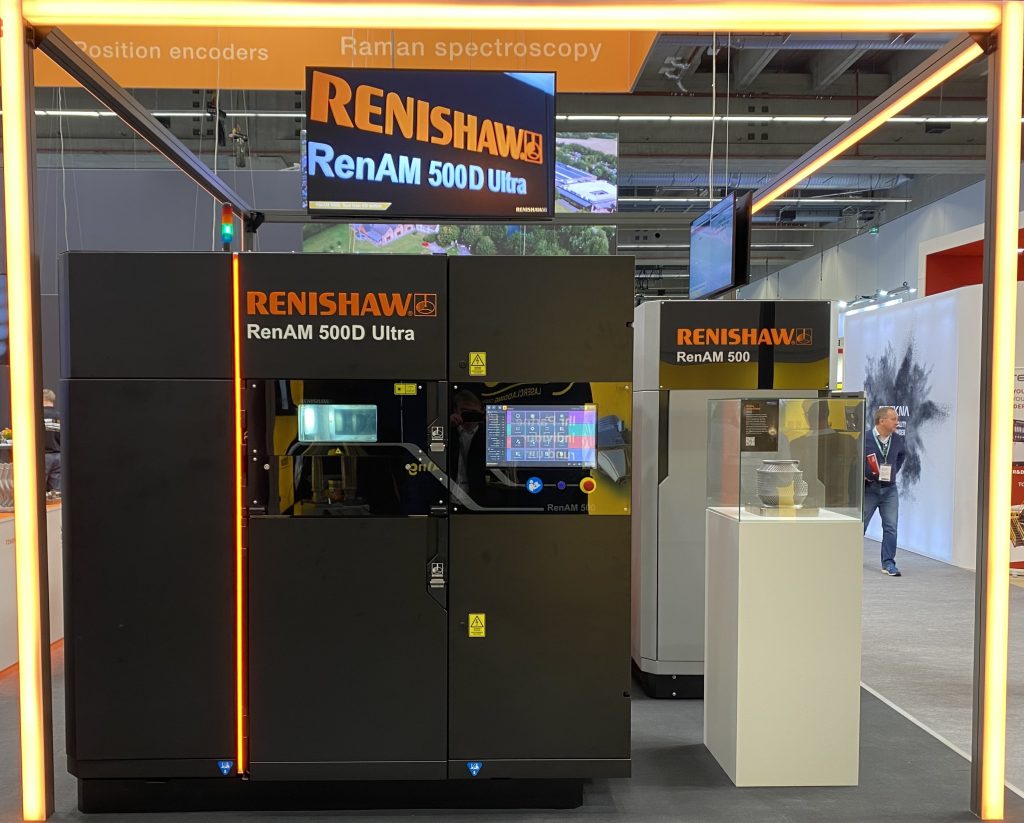

New additions to the RenAM series
The RenAM 500D adds to Renishaw’s 500 series of 3D printers which includes the single-laser 500S and quad-laser 500Q systems. The new system seeks to address the need for a more affordable metal 3D printer which retains good productivity, Dimery explained. “We’ve listened to the market and have tried to respond,” he added. The aim is to lower barriers to adoption while maintaining competitive cost-per-part metrics, critical for industries looking to integrate additive manufacturing into production workflows.
The 500D series retains the robust core features of its predecessors, such as advanced gas flow management, onboard powder recirculation options, and process monitoring tools. Another key feature is Renishaw’s proprietary optical module and galvanometer (Galvo). This control mechanism guarantees laser coverage of the entire build plate, meaning users “don’t have any limitations in terms of sections or quadrant within the build plate.”
Dimery expanded on how Renishaw differentiates from the competition. One key factor is the company’s TEMPUS recoating technology, offered on the RenAM 500D Ultra model. The process allows the lasers to fire during recoater movements, saving up to nine seconds per build layer. This translates to three times faster production speeds compared to single laser systems.
Dimery called TEMPUS a “time-saving technology,” and one of the Renishaw’s “largest developments” of recent years. He added that it eliminates non-productive time by “maximizing the laser time of each layer in the build.” Time savings are geometry-dependent. While typically cycle time savings are around 30%, certain well-matched geometries can save up to 70% with TEMPUS.
According to Dimery, this increase in productivity translates to lower cost per part, promoting the adoption of Renishaw’s additive manufacturing technology over conventional production methods. He added that the individual part costs are “competitive for a lot of industries.” This adds to the RenAM 500D’s “very competitive pricing for machine capacity and footprint size.” Dimery explained that the new RenAM 500D Ultra offers 30% average time savings for around 15% higher investment costs.
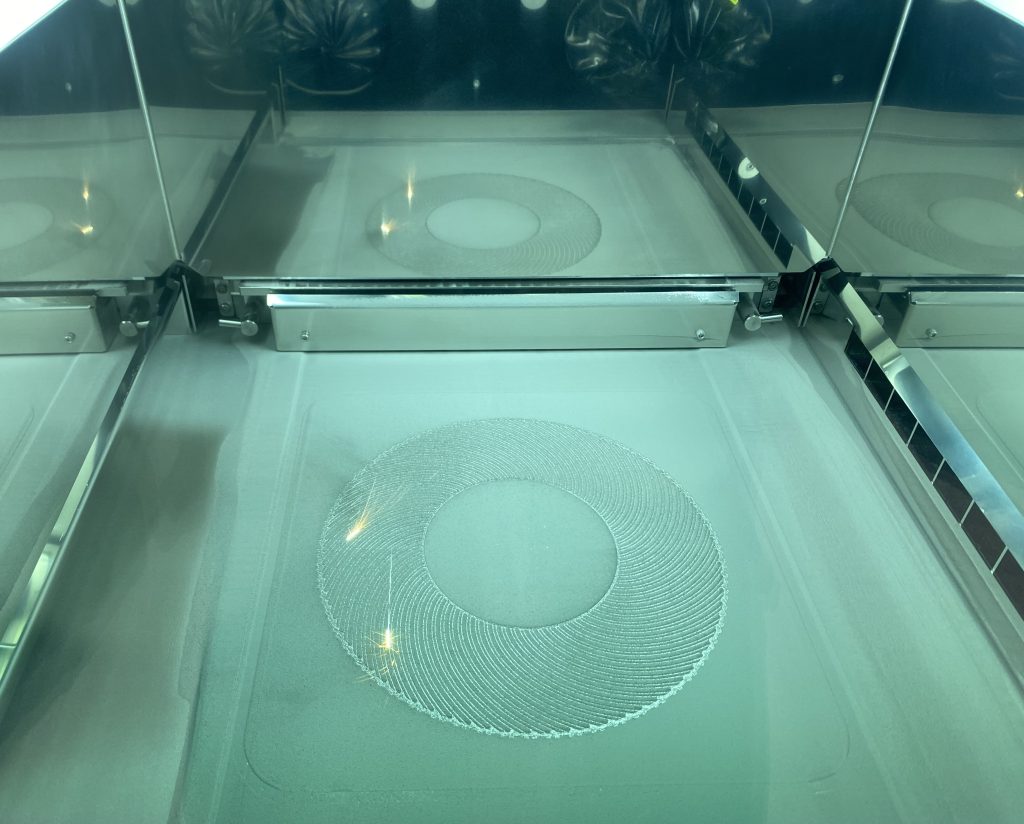

Lifting the lid on customer applications
At trade shows, companies often face limitations on the parts they can display due to customer confidentiality and non-disclosure agreements (NDAs). To address this, many produce demonstration parts which are showcased in place of the actual products.
Renishaw’s booth, on the other hand, was brimming with real-world, customer applications. Dimery believes this serves as a “testament to how successful Renishaw is.” He added, “It’s great to see that a number of companies are willing to share with the public domain that they are partnered with Renishaw.”
One such partner is Mott Corporation, a filtration and flow control engineering specialist based in Farmington, Connecticut. Dimery outlined how Mott has used design for additive manufacturing (DfAM) to achieve performance benefits over parts produced with conventional production methods. Additionally, the firm recently purchased a RenAM 500S Flex 3D printer to reduce machine turnaround and setup times by over 50%.
Another company present at the Renishaw booth was Bristol-based Domin, which showcased its 3D printed servo proportional hydraulic valves. The firm recently acquired a RenAM 500Q Ultra 3D printer, adding to its existing RenAM 500Q system purchased in 2023. Renishaw’s technology reportedly allows Domin to achieve complex geometries with internal features for automotive, aerospace and manufacturing applications.
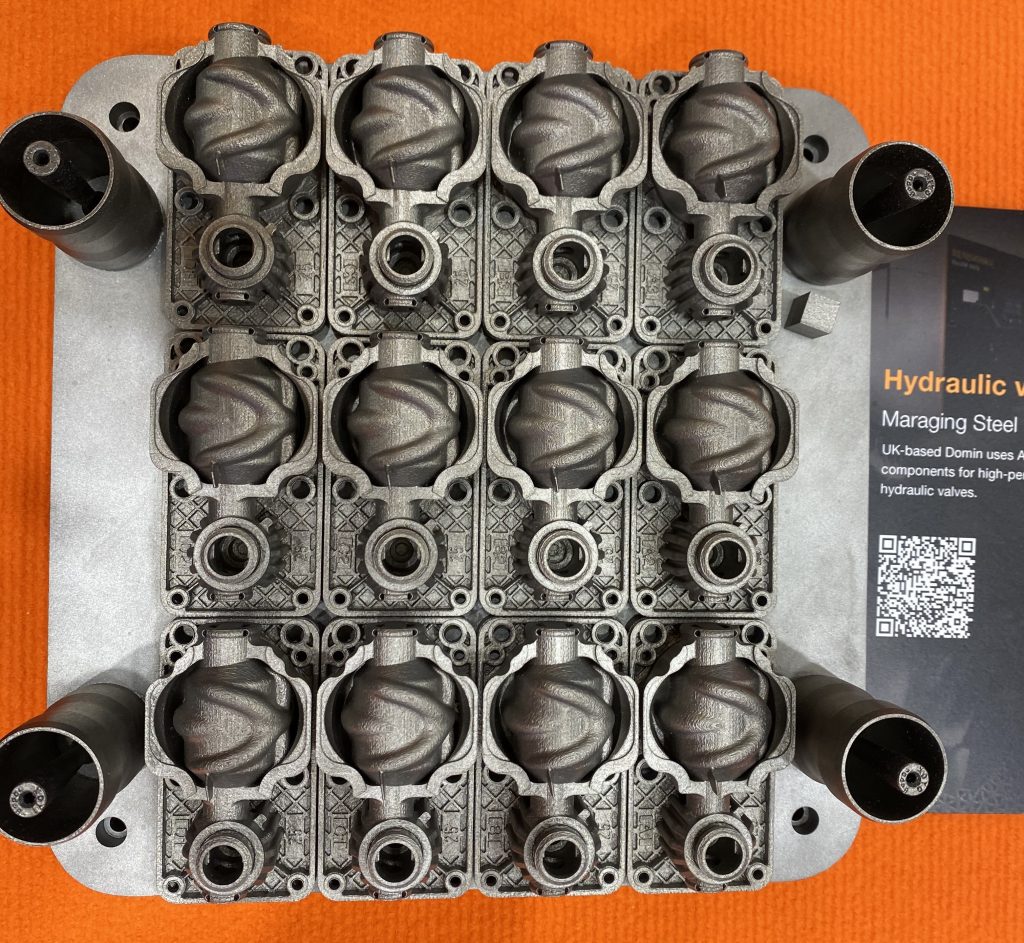

Domin’s approach combines additive manufacturing with high-speed motor control, modern electronics, big data, and connected technology. It hopes this will help reduce one gigatonne of hydraulics-related CO2 emissions by the end of the decade. Additionally, the Renishaw booth featured several 3D printed automotive components produced on the RenAM 500Q by the Basque engineering firm Madit.
Dimery emphasized that Renishaw’s technology “really comes into its own” for medical and dental applications. Several patient-specific 3D printed craniomaxillofacial implants from KLS Martin were displayed at the booth, showcasing the ability to achieve production runs of components with thin walls.
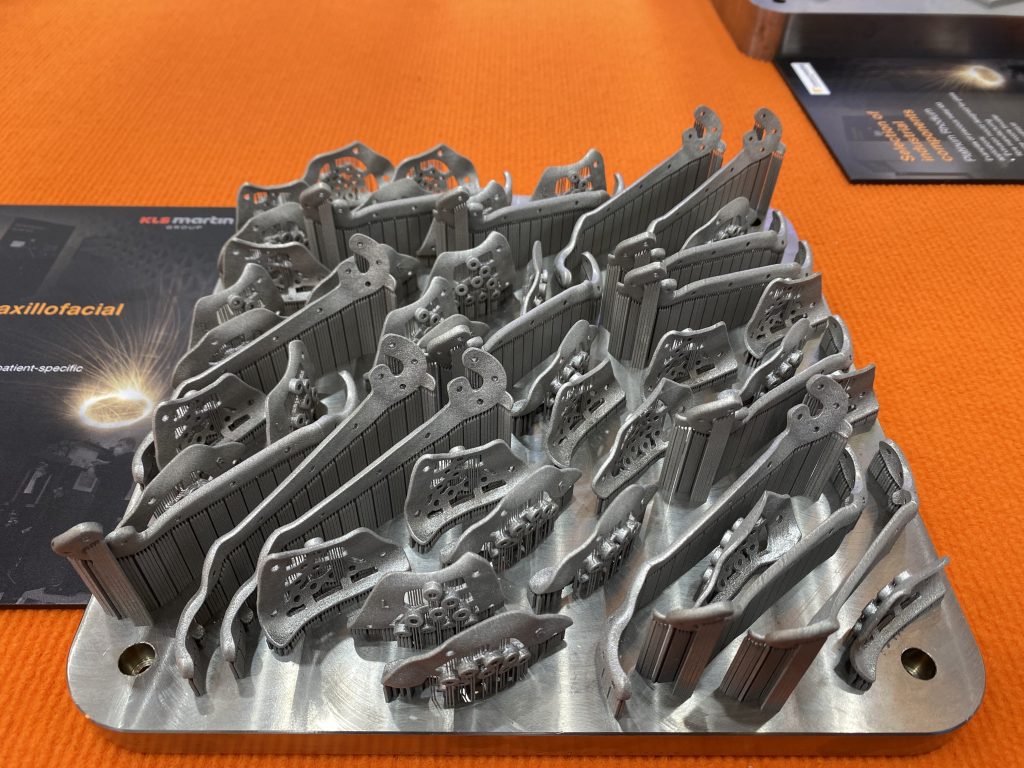

The most popular application at the booth, however, was Team GB’s gold medal-winning racing bike. Renishaw worked with British Cycling to 3D print over 1,000 parts for 32 Olympic track bikes using the RenAM 500Q. These components included aerodynamic cranks, dropouts, seat stay bridges, and seat posts. Notably, the cranks feature an internal lattice structure. Its weight and shape are optimized for “true performance” on the track. The design was also created with cost-effectiveness in mind. “Being a part of that project was a really exciting opportunity for us,” added Dimery. “We collaborated to really push the boundaries in terms of design.”
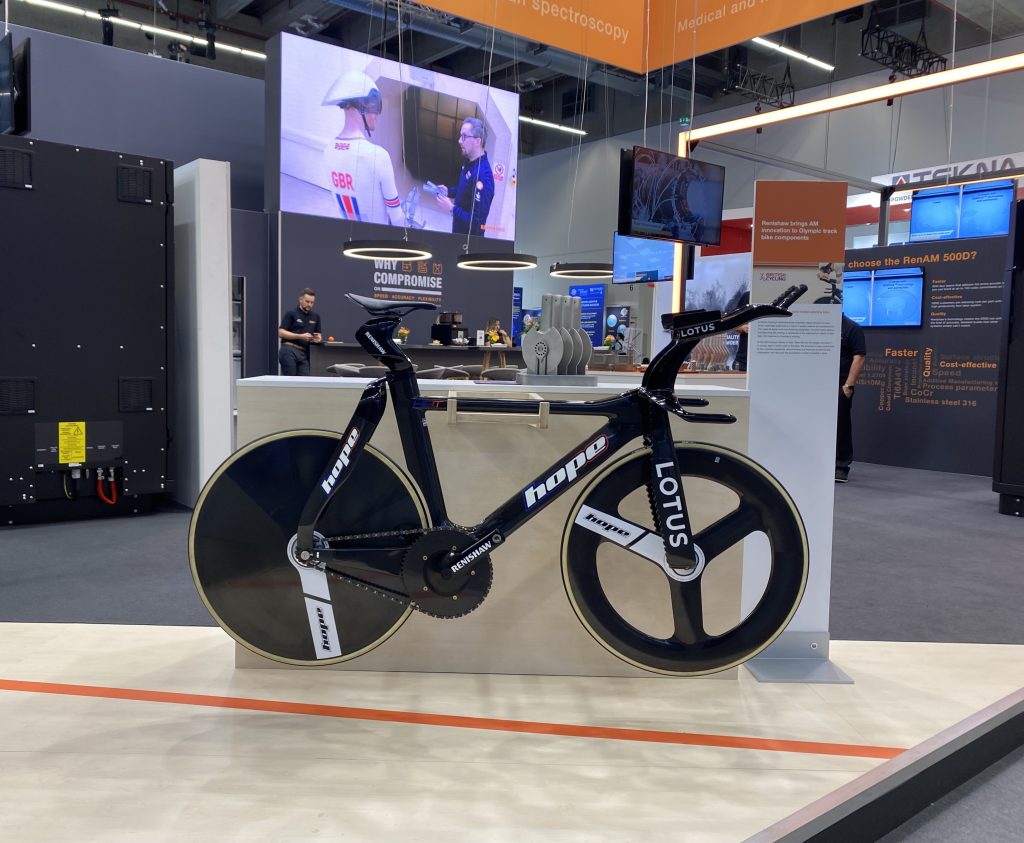

Renishaw and the future of 3D printing
Looking ahead, Dimery believes the future of 3D printing depends on the technology’s ability to solve real-world challenges and deliver value. He highlighted two critical drivers of growth, the first being application-driven adoption. “If you are producing a component that is more cost-effective using another manufacturing method, why print it?” Dimery asked.
Instead, the Additive Manufacturing Business Manager anticipates initial growth for applications which benefit the most from the design freedom offered by additive manufacturing. He pointed to orthopedic implants featuring internal lattices that can’t be produced any other way as one such application.
Another driver of growth, according to Dimery, will be the improving cost-efficiency and productivity gains of 3D printing. As the cost per part decreases due to reduced cycle times, additive manufacturing becomes more viable for a wider range of industries. Dimery believes this shift will lower barriers to adoption, allowing more companies to embrace the technology.
He also emphasized the importance of education in driving market expansion. “The knowledge of additive manufacturing is increasing as more people go through educational programs. This is critical for companies to feel confident in their investment decisions.”
Ultimately, Dimery shared a positive outlook for the 3D printing industry. He acknowledged it is difficult to predict what the future will bring. However, he believes there is “one thing we can be certain of” for the coming decade: “The customer base is going to expect manufacturing costs to become cheaper.” By reducing cycle times, boosting productivity and optimizing cost-per-part, Dimery believes Renishaw is well-positioned to address this demand.
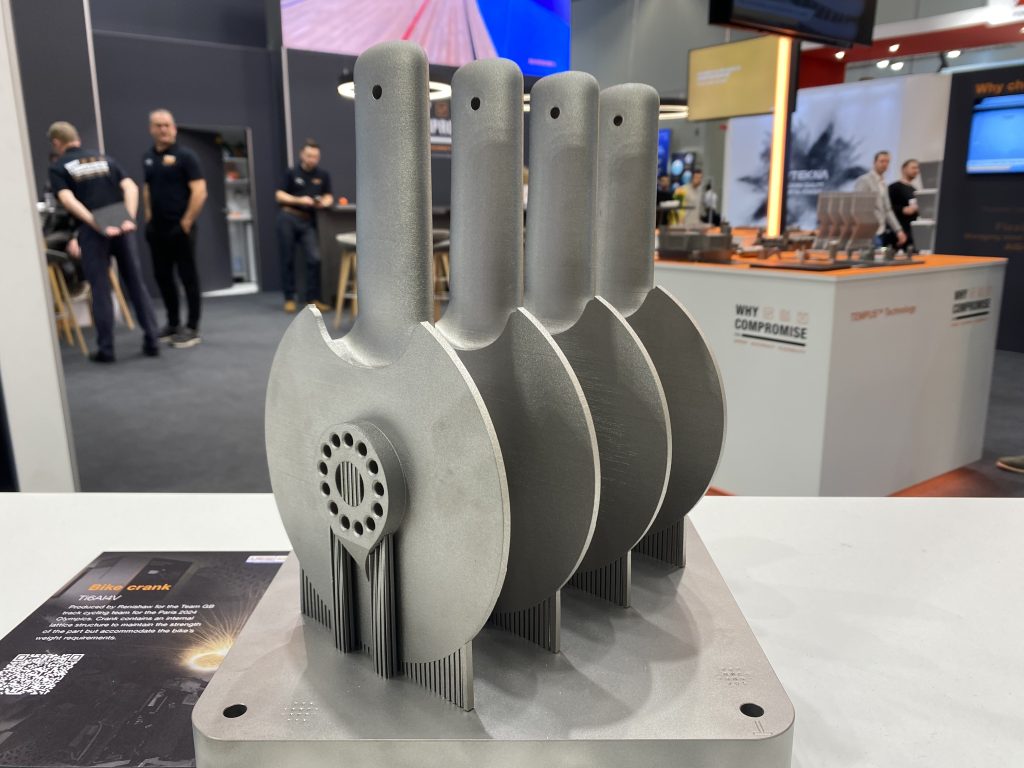

All the news from Formnext 2024.
Who are the leaders in additive manufacturing? Vote now in the 2024 3D Printing Industry Awards!
Want to share insights on key industry trends and the future 3D printing? Register now to be included in the 2025 3D Printing Industry Executive Survey.
What does the future of 3D printing hold?
What near-term 3D printing trends have been highlighted by industry experts?
Subscribe to the 3D Printing Industry newsletter to keep up with the latest 3D printing news.
You can also follow us on Twitter, like our Facebook page, and subscribe to the 3D Printing Industry Youtube channel to access more exclusive content.
Featured image shows the new RenAM 500D Ultra 3D printer from Renishaw at Formnext 2024. Photo by 3D Printing Industry.

![[INTERVIEW] Introducing Renishaw’s New RenAM 500D 3D Printers [INTERVIEW] Introducing Renishaw’s New RenAM 500D 3D Printers](https://i2.wp.com/3dprintingindustry.com/wp-content/uploads/2024/11/The-new-RenAM-500D-Ultra-3D-printer-from-Renishaw-at-Formnext-2024.-Photo-by-3D-Printing-Industry-scaled.jpg?w=696&resize=696,0&ssl=1)
